Translate this page into:
Modified Nance palatal button
Address for Correspondence: Dr. Nitin Arora, 65, Shakti Vihar, Pitam Pura, New Delhi - 110 034, India. E-mail: bracesimplantclinic@gmail.com
This article was originally published by Wolters Kluwer and was migrated to Scientific Scholar after the change of Publisher.
Abstract
This paper describes modified Nance palatal button by which problems encountered in the palatal region around the acrylic button during space closure and molar distalization can be minimized.
Keywords
Anchorage
inflammation
Nance palatal button

[SHOW_RELATED_PUBMED_ARTICLES]
INTRODUCTION
In orthodontics, patients having critical and moderate anchorage requiring placement of Nance palatal button, the common problem encountered during space closure is inflammation of palatal mucosa beneath and surrounding the palatal button due to transfer of forces onto the palate through the acrylic button. For the treatment of inflammation, retraction has to be stopped and adjunctive medicines (antibiotics, as well as nonsteroidal anti-inflammatory drugs) has to be given which further decreases the tooth movement.[1,2]
Occurrence of this inflammation can be reduced and prevented by modifying the Nance palatal button with permanent soft liners that will reduce and distribute forces to the underlying oral structures enhancing patient comfort.[3-6] The system GC-RELINE soft (GC Dental Products Corporation, Japan) is a permanent soft liner based on addition silicone and is available in safety cartridges. The steps for chairside relining are as follows:
Check and adjust the Nance palatal button (removable/ fixed) in the oral cavity [Figure 1].
 Figure 1
Figure 1- Nance palatal button in patient’s mouth
Disinfect the appliance and relieve 2 mm of tissue surface of the palatal button. Clean and dry thoroughly.
Apply primer R and gently dry with air [Figure 2].
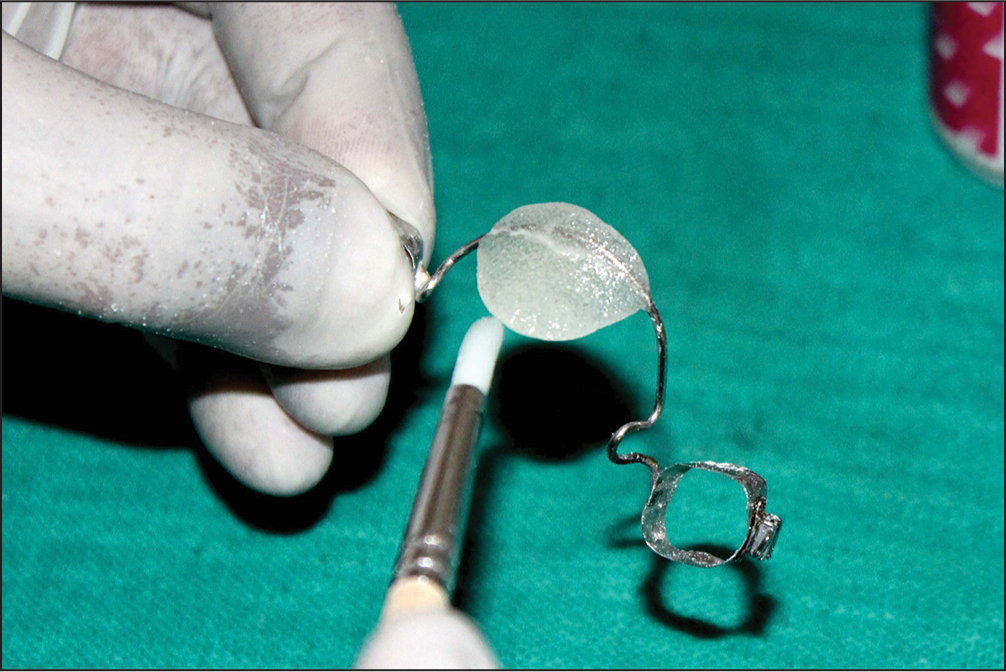 Figure 2
Figure 2- Primer is applied on the relieved tissue surface of palatal button
Dispense material from the cartridge to the tissue surface of the palatal button. Working time for the reliner is 2 min at 23°C [Figure 3].
 Figure 3
Figure 3- Dispensing of reliner material
Seat the whole appliance in the mouth for at least 5 min [Figure 4].
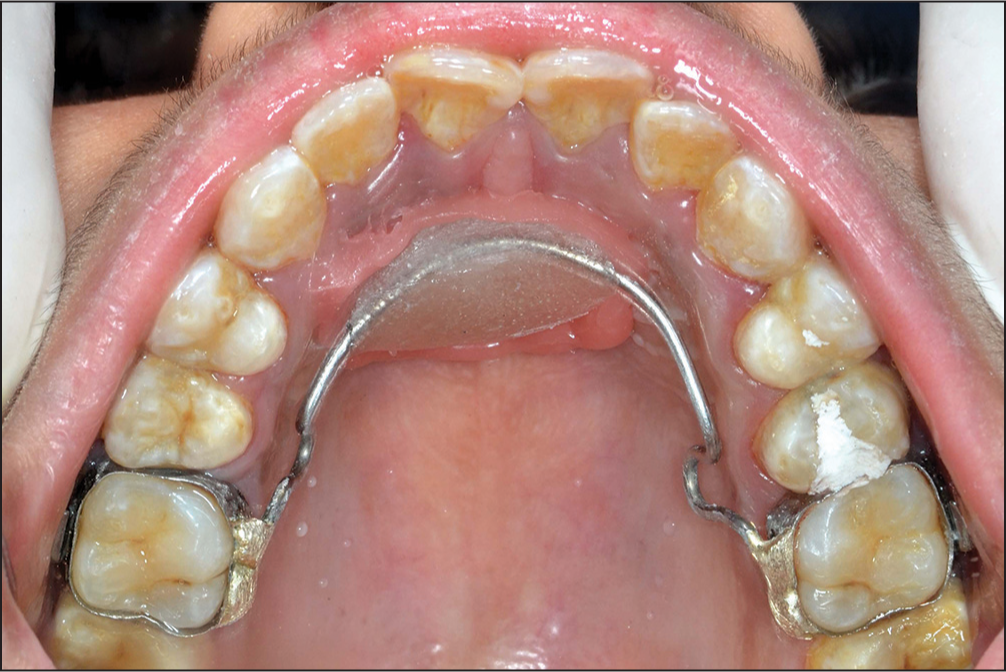 Figure 4
Figure 4- Seated appliance with reliner material in patient’s mouth
Once the reliner has set in the patient’s mouth, remove the appliance. Excess material is removed with the scalpel [Figure 5], progressively trim and finish with the bur [Figure 6].
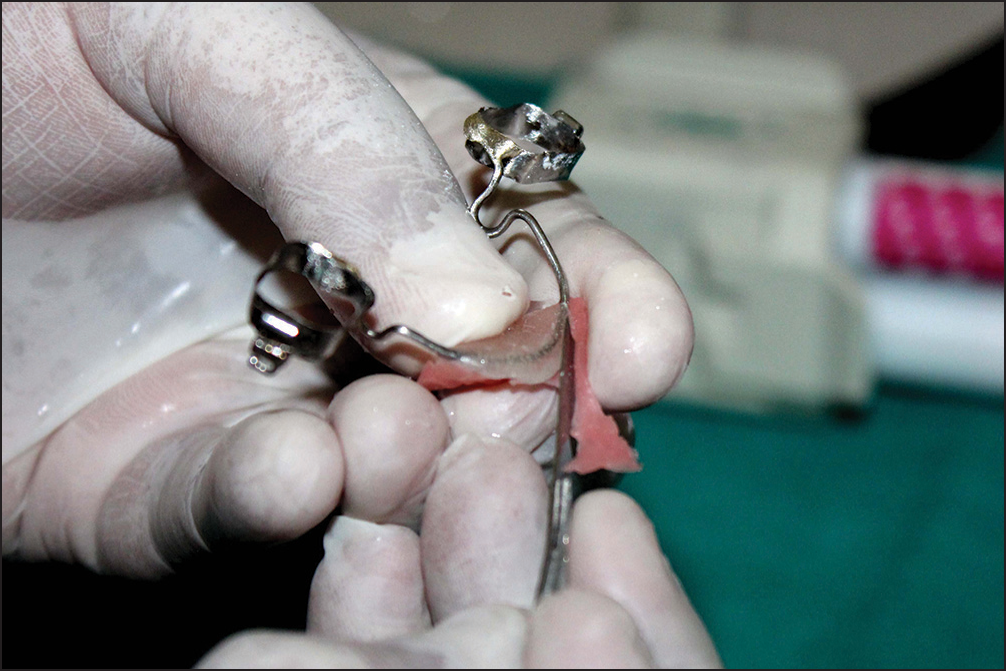 Figure 5
Figure 5- Excess material is removed
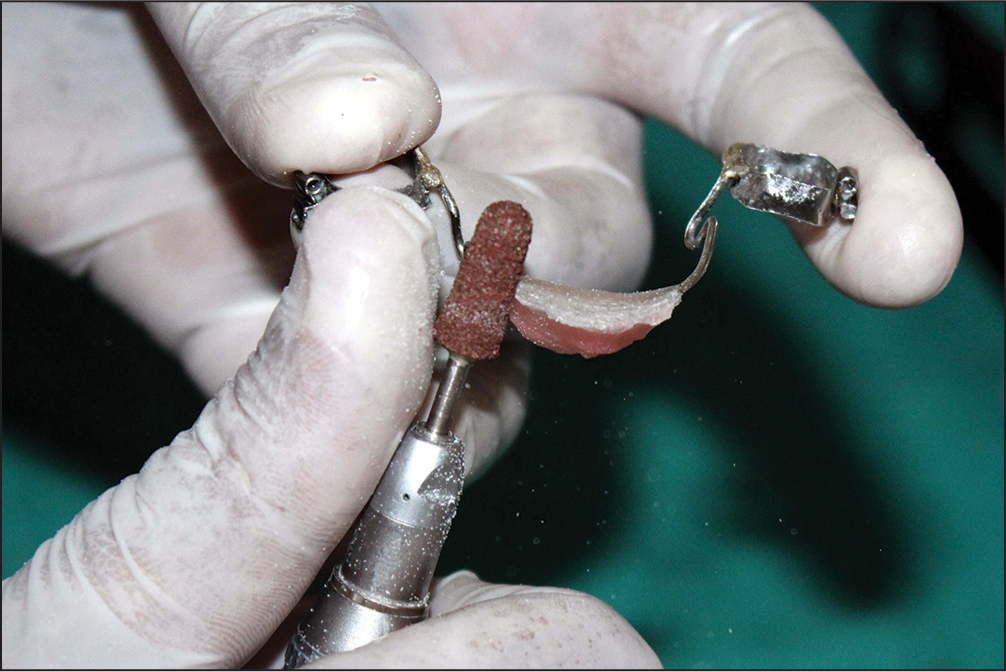 Figure 6
Figure 6- Trimming of edges
Apply modifier at the edges of palatal button to get a smoother finish.
Check the fit of the appliance in the patient’s mouth [Figure 7].
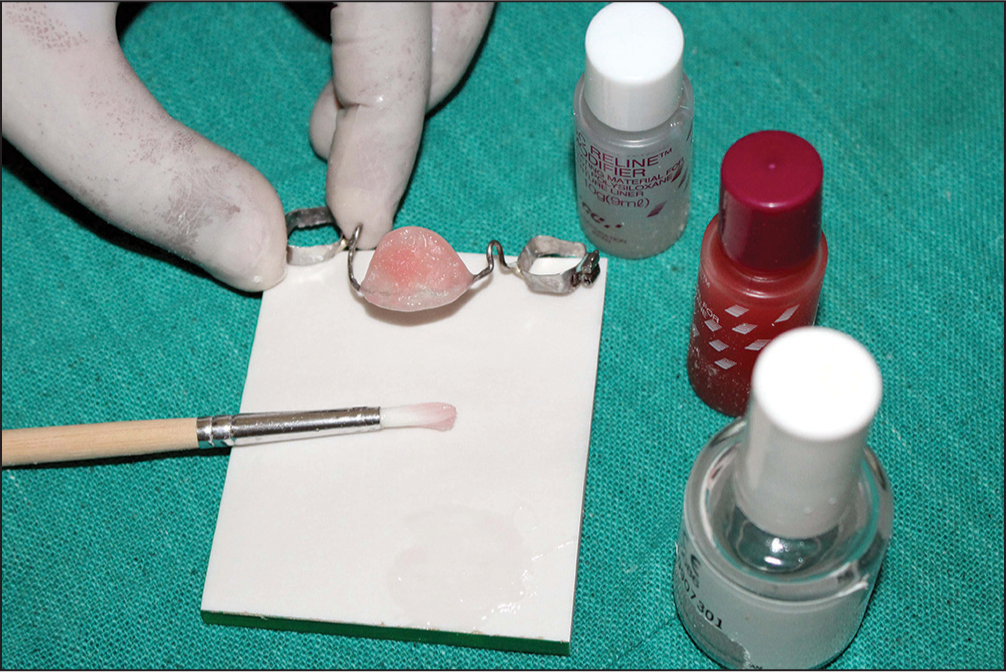 Figure 7
Figure 7- Finished modified Nance palatal button
Soft tissue inflammation and patient’s discomfort caused by tongue thrusting habit breaking appliance with acrylic button and distalization appliances with acrylic button in the palate can also be reduced and prevented to a certain extent by modifying the appliance in a similar way [Figure 8].[1,2]

- Seated tongue thrusting habit breaking appliance with reliner material in patient’s mouth
Financial support and sponsorship
Nil.
Conflicts of interest
There are no conflicts of interest.
References
- Effectiveness of 3 methods of anchorage reinforcement for maximum anchorage in adolescents: A 3-arm multicenter randomized clinical trial. Am J Orthod Dentofacial Orthop. 2014;146:10-20.
- [Google Scholar]
- Comparison of sagittal anchorage conservation of mini-implants and modified Nance palatal buttons. Orthodontics (Chic.). 2012;13:e10-9.
- [Google Scholar]
- Bond strength of permanent soft denture liners bonded to the denture base. J Prosthet Dent. 1995;74:595-601.
- [Google Scholar]
- Effect of surface treatments on the bond strength of soft denture lining materials to an acrylic resin denture base. J Prosthet Dent. 2014;112:964-71.
- [Google Scholar]
- Effect of beverages on the hardness and tensile bond strength of temporary acrylic soft liners to acrylic resin denture base. J Dent (Shiraz). 2013;14:178-83.
- [Google Scholar]





